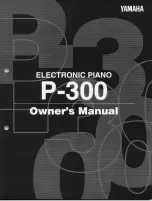
NORD MODULAR G2 V1.1
12. Synthesis basics: Subtractive synthesis
Page 201
12. S
12. S
12. S
12. S
Y
Y
Y
YN
N
N
NT
T
T
TH
H
H
HE
E
E
ES
S
S
SIIIIS
S
S
S
B
B
B
BA
A
A
AS
S
S
SIIIIC
C
C
CS
S
S
S
S
S
S
S
U
U
U
UB
B
B
BT
T
T
TR
R
R
RA
A
A
AC
C
C
CT
T
T
TIIIIV
V
V
VE
E
E
E
S
S
S
SY
Y
Y
YN
N
N
NT
T
T
TH
H
H
HE
E
E
ES
S
S
SIIIIS
S
S
S
Subtractive synthesis is one of the oldest and most widely spread forms of synthesizing sounds. It is the
method employed in such classics as the Moog synthesizers, the Sequential Prophet-5 and 10, Arp syn-
thesizers, most Oberheim synthesizers, the Roland Jupiter models, the TB-303 etc.; the list is practically
endless. Even new digital instruments such as workstations and sample playback devices employ many of
the basic principles of subtractive synthesis.
With the Nord Modular G2 system, Clavia introduces a new concept: a modern digital instrument that
combines a faithful reproduction of the behaviour of the old analog favourites with the convenience and
stability of the newer designs.
The purpose of this chapter is to give you a quick introduction to the basics of subtractive synthesis. If
you’d like to know more, there are number of books written on the subject.
M
M
M
M
O
O
O
OD
D
D
DU
U
U
UL
L
L
LE
E
E
ES
S
S
S
-
-
-
-
T
T
T
TH
H
H
HE
E
E
E
B
B
B
BU
U
U
UIIIIL
L
L
LD
D
D
DIIIIN
N
N
NG
G
G
G
B
B
B
BL
L
L
LO
O
O
OC
C
C
CK
K
K
KS
S
S
S
Subtractive synthesis started its life in
modular synthesizers
, large cabinets housing separate electronic
modules, connected via patch cords. With the advancement of technology, the functionality of many of
these modules could be put onto one single circuit board. But functionality-wise, subtractive synthesizers
are still built out of the same modules (or building blocks) as they were decades ago. We will now take a
closer look at these building blocks. Let’s first talk about three basic modules that actually create and proc-
ess sound:
O
O
O
O
S
S
S
SC
C
C
CIIIIL
L
L
LL
L
L
LA
A
A
AT
T
T
TO
O
O
OR
R
R
R
The Oscillator is one of the few modules in a synthesizer that actually
produces
any sound, (most of the
other modules only
shape
the sound from the oscillator.) The oscillator is a bit like the string on a string
instrument, it vibrates to create sound.
F
F
F
F
IIIIL
L
L
LT
T
T
TE
E
E
ER
R
R
R
The signal from the oscillator can be sent through a Filter which shapes the
timbre
of the sound to make
it “bright”, “dull”, “thin”, etc.
A
A
A
A
M
M
M
MP
P
P
PL
L
L
LIIIIF
F
F
FIIIIE
E
E
ER
R
R
R
The Amplifier shapes the
volume
of the sound making it “soft” or “hard”, “slow” or “short”.
In addition to these three basic modules, all synthesizers also have “modulators”, devices that can make
the volume, timbre pitch and other qualities of sound vary continuously when you play a key. It is these
modulators that basically add animation to the sound, taking it from a dull organ drone to a dynamic and
interesting timbre. The two most common modulators are Envelopes and LFOs:
E
E
E
E
N
N
N
NV
V
V
VE
E
E
EL
L
L
LO
O
O
OP
P
P
PE
E
E
E
G
G
G
GE
E
E
EN
N
N
NE
E
E
ER
R
R
RA
A
A
AT
T
T
TO
O
O
OR
R
R
R
An envelope generator is used to give a sound a “shape”. If you apply an envelope to the amplifier (which
controls the volume) you are able to make the sound for example slowly fade in and then fade out when
you press and hold a key.














































